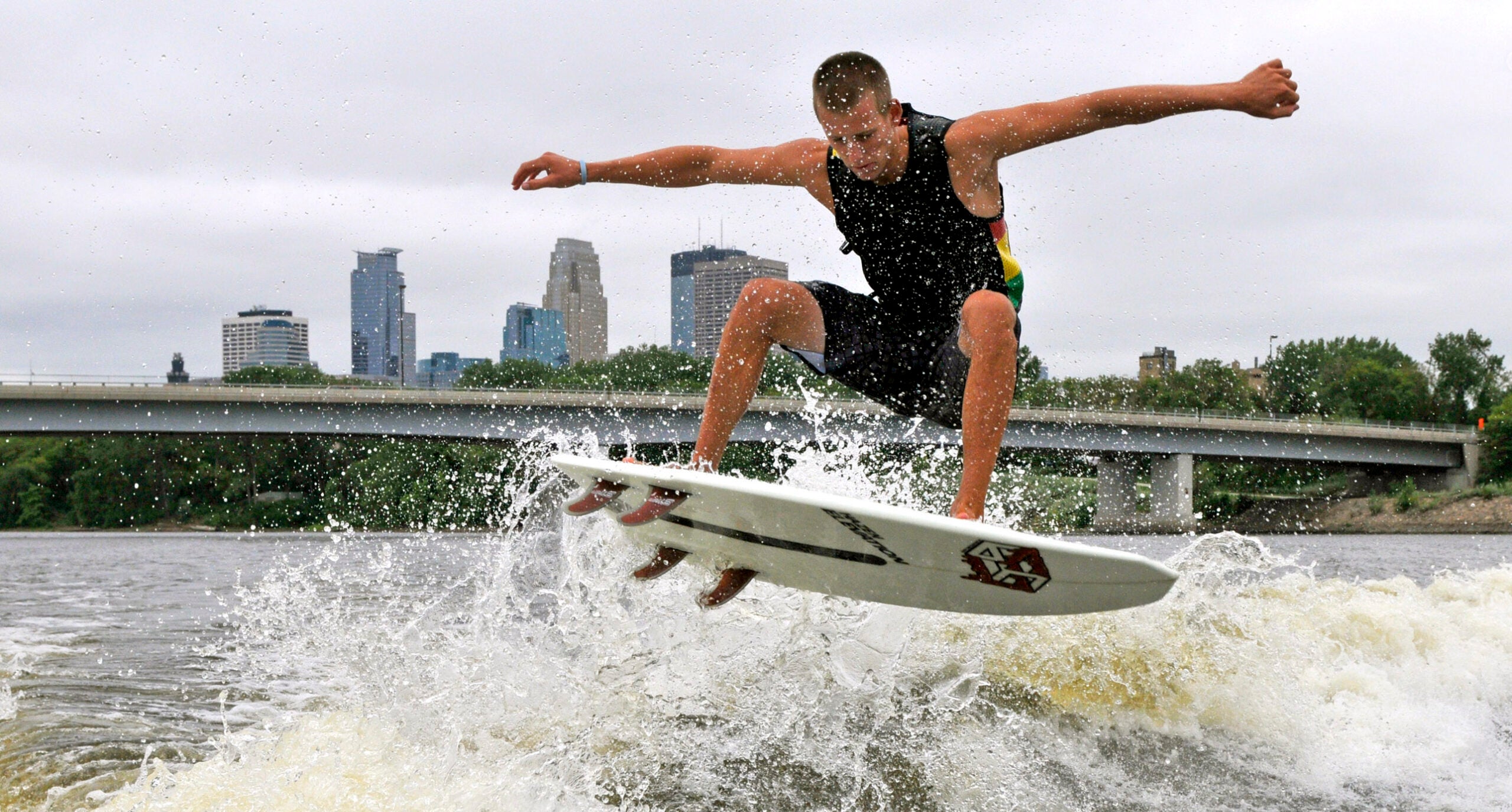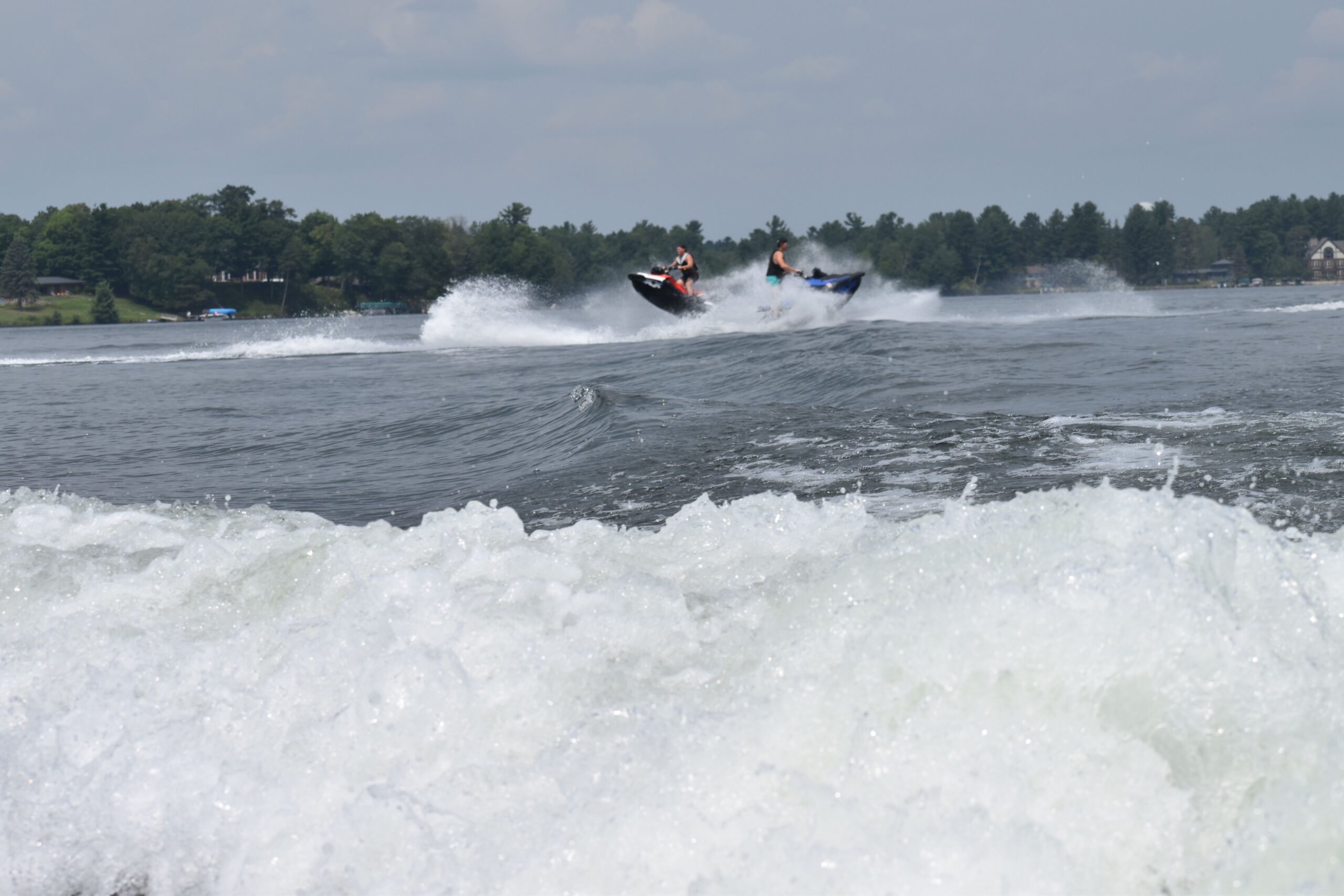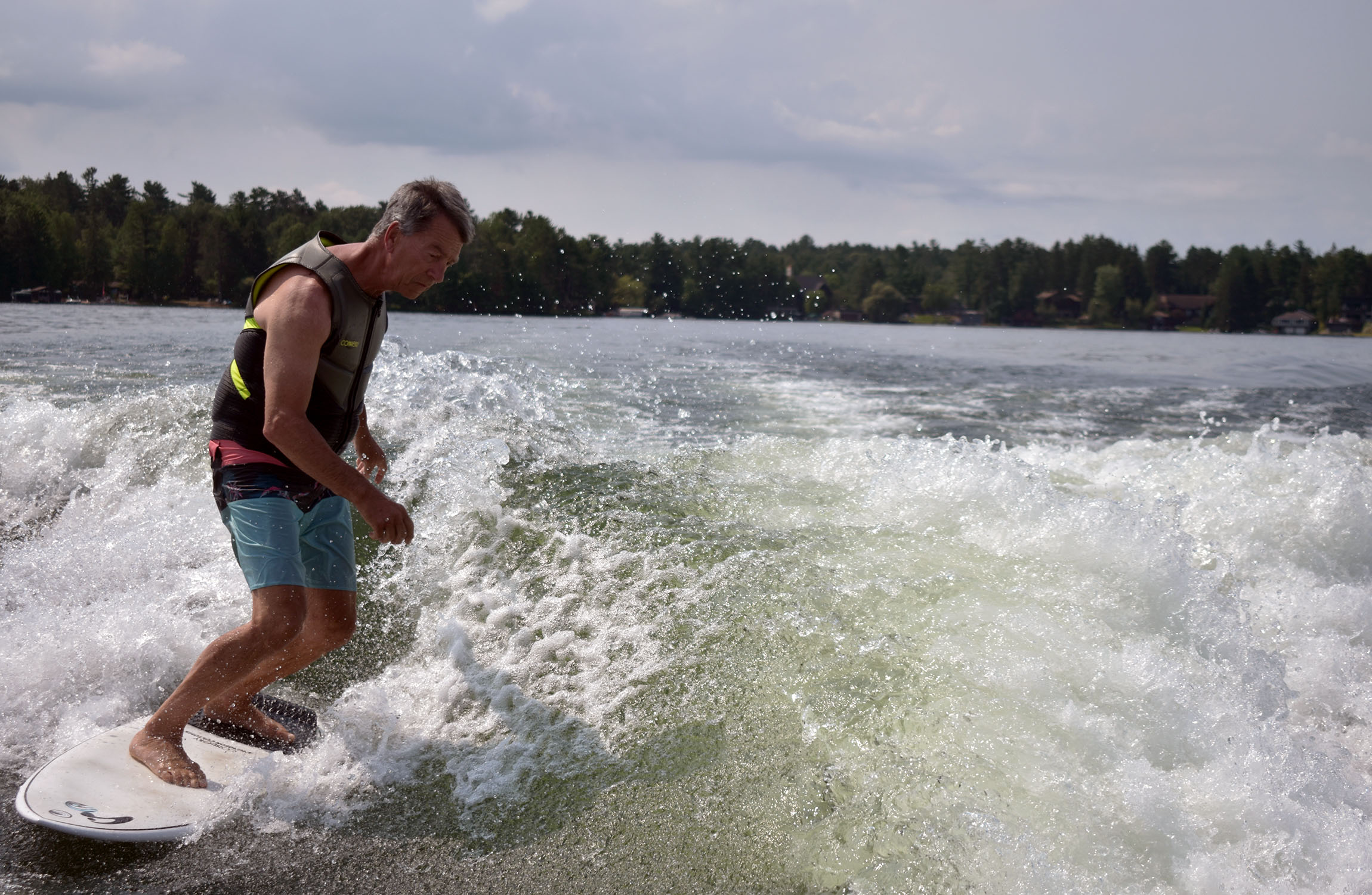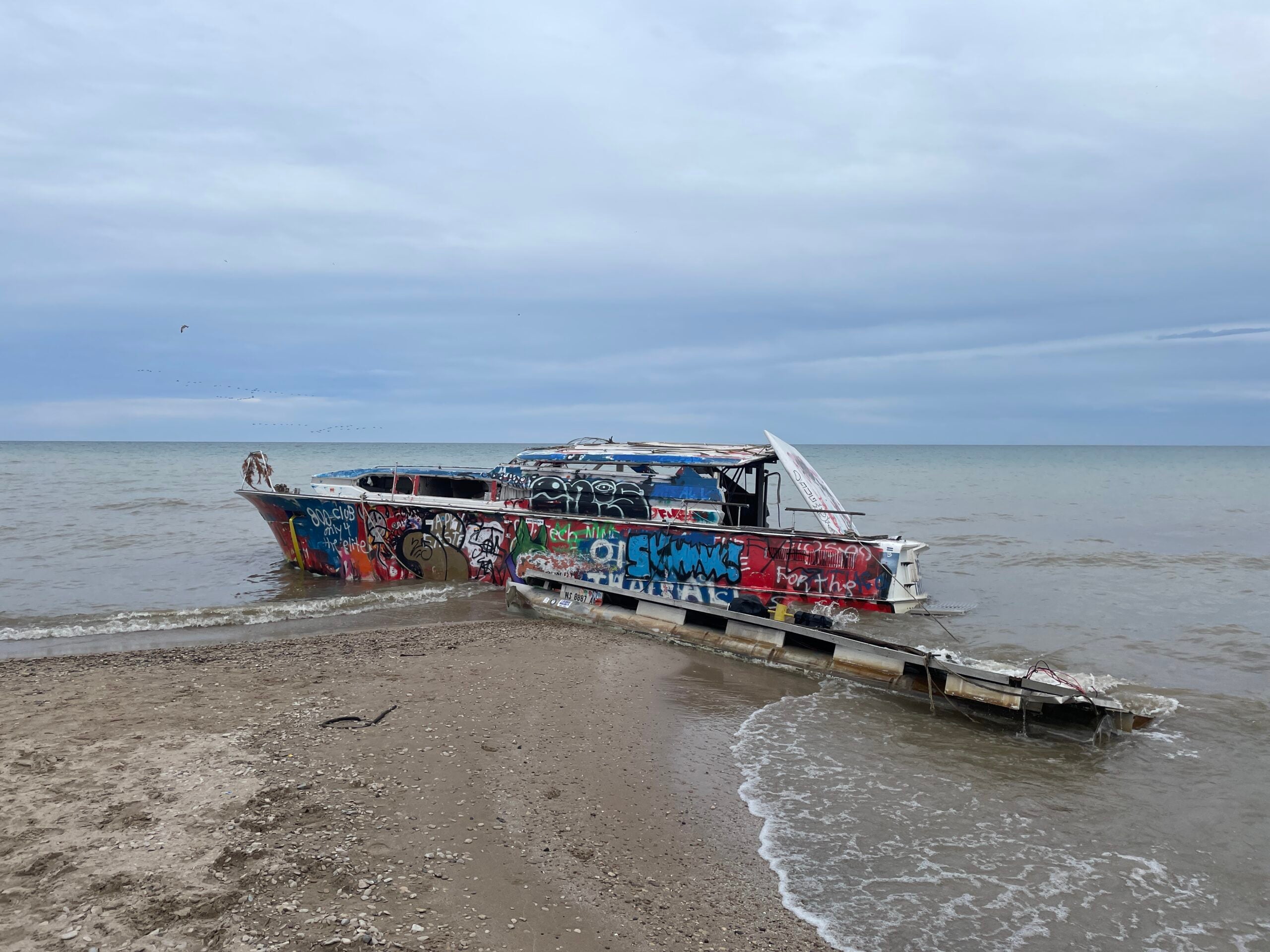Every summer, boaters and swimmers descend on Wisconsin’s 15,000 lakes to vacation and frolic in the water. But many communities around the state’s lakes know that summer fun often comes at a cost. Homeowners on these lakes are taking steps to protect water quality, regulate boating and restore habitats.
In central Wisconsin, more than 350 lake homeowners surround Little Green Lake, a 460-acre body of water that sits between the city of Markesan and the town of Green Lake.
This summer, the Little Green Lake Protection and Rehabilitation District is working with both municipalities to enact matching ordinances that would prohibit wake-enhanced boating, which refers to power boats that create large waves that can be used for surfing or wakeboarding.
News with a little more humanity
WPR’s “Wisconsin Today” newsletter keeps you connected to the state you love without feeling overwhelmed. No paywall. No agenda. No corporate filter.
“Wake-enhanced boating can be quite damaging in shallow lakes or at depths under 25 feet, which is nearly all of our lake,” Tami Schattschneider, lake district chair, told WPR’s “Wisconsin Today.”
The district’s proposed ordinance is designed to prevent damage to healthy aquatic plants, fish habitats and the lake’s shorelines, she said.
Schattschneider said both municipalities support passing the ordinance and will submit draft documents to the state Department of Natural Resources this summer. She expects the town of Green Lake to hold a vote in July and the city of Markesan to hold a vote in September.
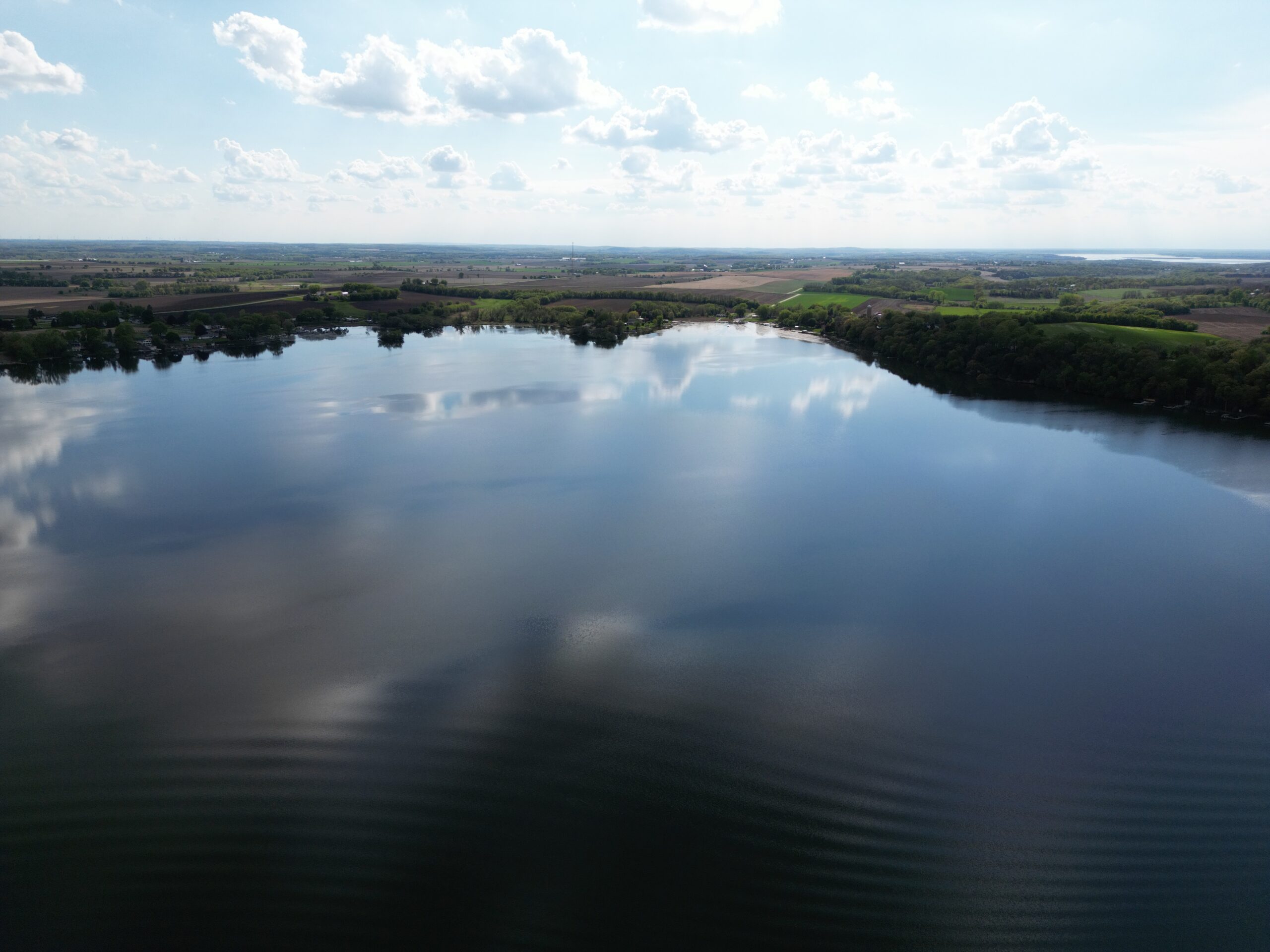
Wisconsin lake districts are growing across state
The Little Green Lake Protection and Rehabilitation District is one of more than 250 lake districts across Wisconsin, according to Eric Olson, director of the Extension Lakes program at the University of Wisconsin-Stevens Point.
“It’s very much like your school board,” he said. “Some people are appointed to the board. Some are elected.”
Olson told “Wisconsin Today” that lake districts must comply with Wisconsin Chapter 33, which allows lake homeowners to create a government body within district boundaries to enact ordinances regulating boating, water quality and habitat restoration.
To do so, community members may petition a Wisconsin county, village or town board, or a city council. If approved, property owners then share lake management costs through tax levies.
“It’s the taxpayers themselves who get to determine the [annual] budget — that’s a form of direct democracy,” he said.
Olson said what drives communities to form a lake district has a lot to do with costs associated with lake management. One potential hefty management expense is equipment to remove invasive plants like the Eurasian watermilfoil, which could cost $100,000, he said.
Other communities, as with the Callahan-Mud Lake Protective Association in Sawyer County, form districts in order to manage the maintenance of dams.

Lake district forms in Sawyer County to address dam reconstruction costs
Just east of Hayward, an aging dam sits off Callahan Lake Road north of Callahan and Mud lakes.
Now, more than 150 property owners who live along the 600-acre waterbody have a vested interest in the dam’s future as well aquatic species management.
“Lake districts up here in Sawyer County are a new concept,” said Lynne Amundson, former president of the Callahan-Mud Lake Protective Association.
Now the secretary of the Callahan Mud Lake District, Amundson said the Sawyer County Board approved the association’s request to become a lake district in March. This gave the district residents the power to vote on the dam’s reconstruction.
The petition to create the district was submitted last fall, but Amundson said the journey began in 2022 after the state Department of Natural Resources confirmed the lake dam to be in “poor” condition.
“We brought that to lake association members and [formed] what we call the exploratory dam committee to address this issue,” she said.
Amundson said the committee then reviewed historical documents of Sawyer County, the town of Round Lake and the DNR to determine who owns the land around the dam.
Association members also had to brush up on Wisconsin law in order to inform property owners what a lake district can and can’t do.
“A lot of research into education — marketing, informational material, presentations, developing a website,” she said of the effort.
Now that the Callahan Mud Lake District has formed, the local lake association will remain in operation through 2026 as the organization implements a surface water grant awarded by the DNR earlier this year.
As far as the dam’s future, Amundson said the district members plan to hold discussions about grants the lake district is eligible to receive to support dam reconstruction.
“The focus right now is to work with the county and the town about being able to see what we can do to reconstruct or rebuild the dam and go from there,” Amundson said.



